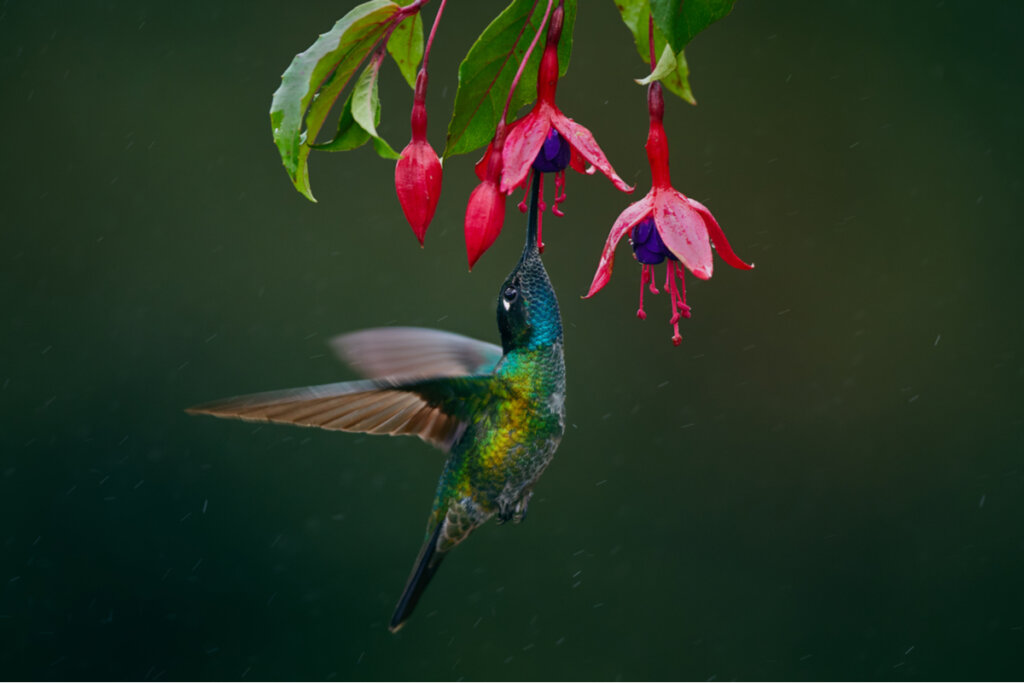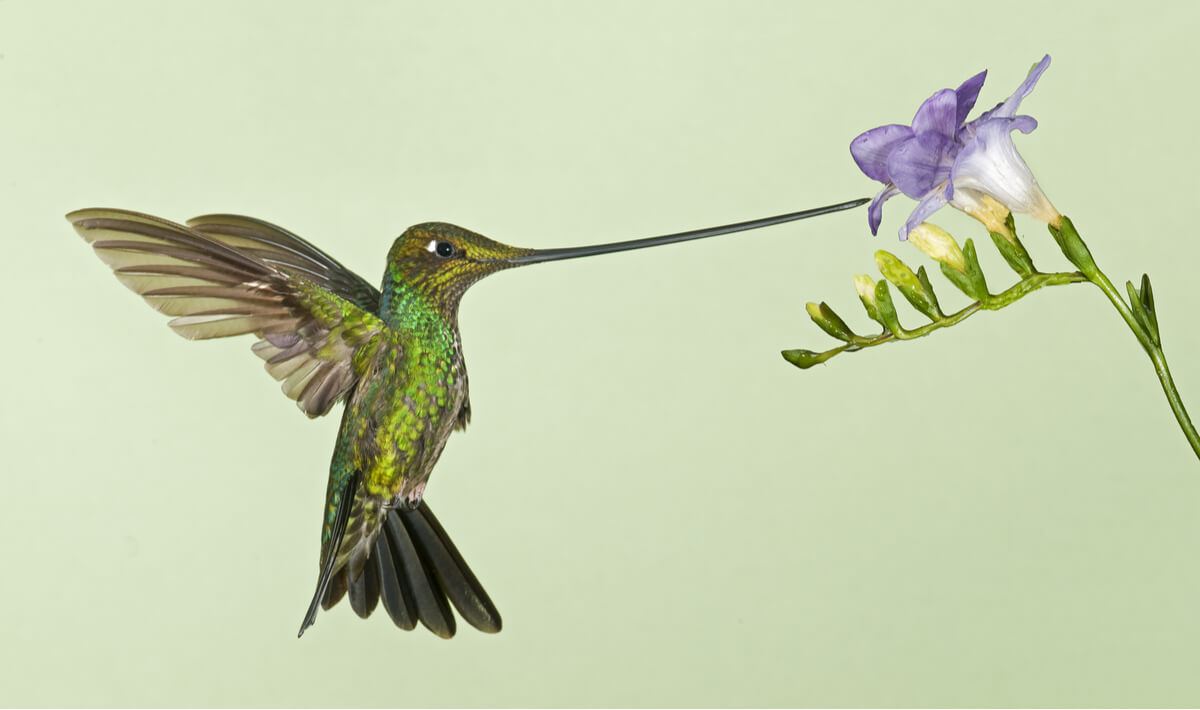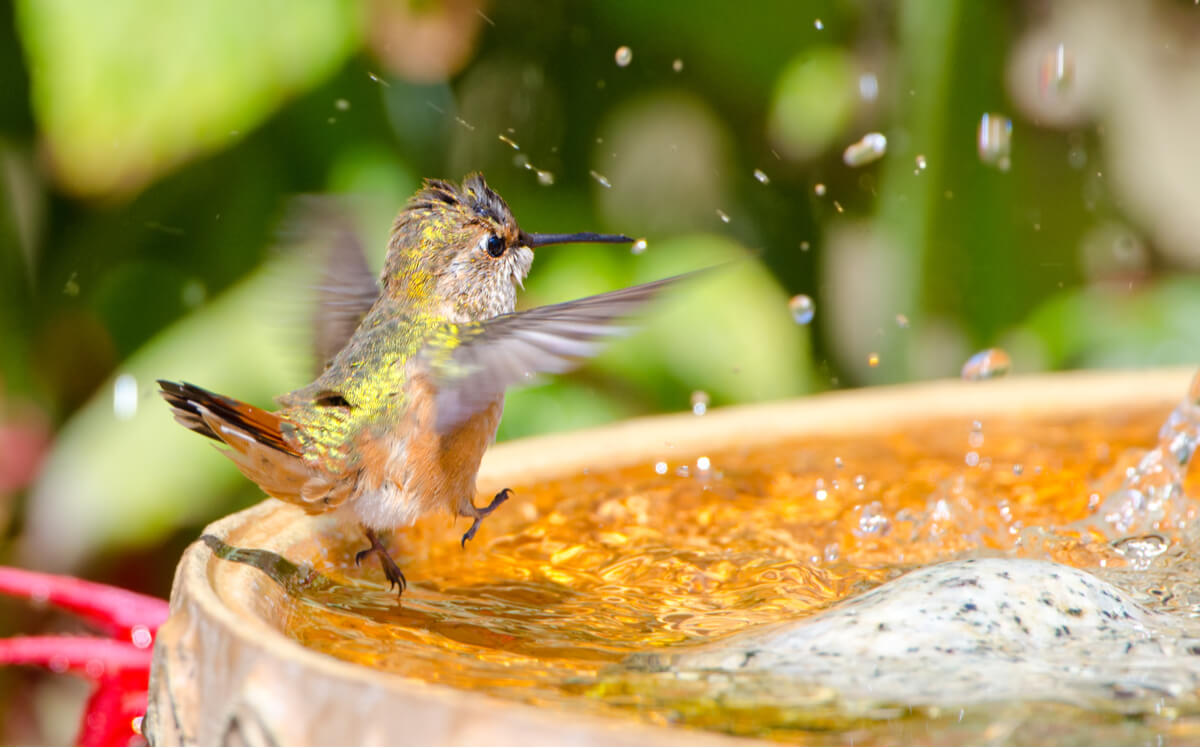Why Does the Hummingbird Flap So Fast?

The hummingbird flaps so fast that it’s sometimes mistaken for an insect buzzing around the flowers looking for nectar. Nobody asks about the flapping speed of an insect, but, with a bird, things change.
If you have ever asked yourself this question, you’ve come to the right place for the answer! The adaptation mechanisms of this beautiful bird will fascinate you!
Hummingbird characteristics
Hummingbirds belong to a subfamily of apodiform birds called Trochilidae. There are more than 300 species of hummingbirds spread across the American continent, but the highest concentration of them is in Central America.
This bird’s beak is one of the most striking adaptations they have, in addition to their wings. Its elongated, conical, and sometimes curved shape is perfect for extracting the nectar from the flowers they feed on. Depending on the needs of the species, the beak can be almost the same length as the body of the hummingbird.
Hummingbirds are some of the smallest birds around. Their size, diet, and way of flying give them unique abilities, but also certain disadvantages. If you want to know everything about the morphology of this beautiful animal, keep reading.

Why does the hummingbird flap so fast?
Some researchers say that the flight of a hummingbird is more similar to the flight of insects than that of a bird. These small birds can remain static in the air at a fixed point, and, from there, move up, down or even backwards.
A hummingbird flaps, on average, up to 53 times per second. The fastest (the amethyst hummingbird (Calliphlox amethystina), flaps its wings 80 times per second. At the other extreme is the giant hummingbird (Patagona gigas), which flaps about 10-15 times per second.
But why does the hummingbird flap at this speed? These birds need to stay fixed in the air while they extract the nectar from the flowers, on which they feed. In addition, these rapid movements make it difficult for predators to hunt them.
According to studies, the mitochondria in the muscle cells of these birds work twice as fast as those of mammals. Therefore, these birds are able to generate energy more quickly and maintain a flight rate that no other animal can match.
The price for such a fast flap!
To move at that speed with such a small body takes a great deal of energy. The basic metabolism of the hummingbird – that is, when it’s at rest – is already tremendously high.
Hummingbirds live in a very delicate balance between the lightness that allows them to suck on flowers and the need to consume huge amounts of food. To stay alive, a hummingbird must feed every 15-20 minutes.
The hummingbird flaps so fast thanks to its morphology
The design of their wings is also very different to that of other birds, as they’re shaped like a sword and connect with the body only from the joint of the back. Thanks to this, the hummingbird can rotate its wings almost 180 degrees, which allows it to stay in the air and move around the same pivotal point
Hummingbirds can’t perch on flowers to feed, as they have very thin, weak legs.
Differences in the flight of the largest hummingbirds
A hummingbird’s flaps are slower the bigger the species is. This requires greater muscle capacity, which is directly related to the bird’s ability to accelerate sharply, brake mid-flight, and make sharp turns.
In this way, the larger hummingbird species compensate for the greater body mass and the small size of their wings.
How fast does a hummingbird’s heart beat?
Coupled with one of the fastest metabolisms in the biosphere, the hummingbird has the fastest heart rate in vertebrates: 1,200 beats per minute! If it weren’t that fast, the nutrients wouldn’t reach the entire body and, therefore, the energy needs of this little bird couldn’t be satisfied.

The hummingbird is one of our most revered birds. This isn’t surprising, because this bird’s aerial feats amaze us right from the first moment that it’s mistaken for a bumblebee. What other secrets will be unraveled about them? Only science will tell!
All cited sources were thoroughly reviewed by our team to ensure their quality, reliability, currency, and validity. The bibliography of this article was considered reliable and of academic or scientific accuracy.
- California Academy of Sciences. (2014). Hummingbird Evolution. https://www.calacademy.org/explore-science/hummingbird-evolution
- Warrick, D. R., Tobalske, B. W., & Powers, D. R. 2005. Aerodynamics of the hovering hummingbird. Nature, 435(7045), 1094.
- Roslyn Dakin, Paolo S. Segre, Andrew D. Straw, Douglas L. Altshuler. “Morphology, muscle capacity, skill, and maneuvering ability in hummingbirds“. Science 359: 6376 (653 – 657). 9 de febrero de 2018.